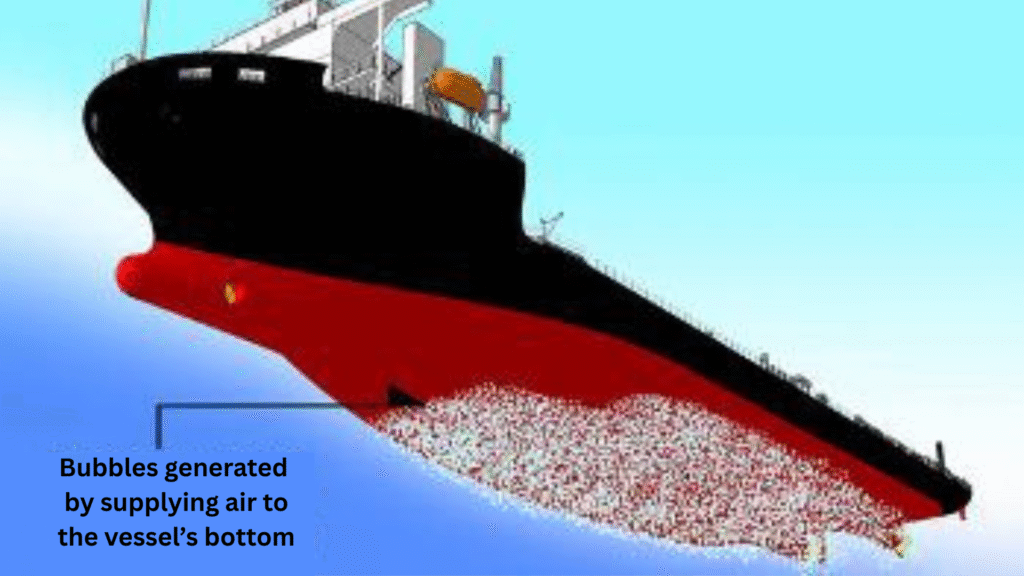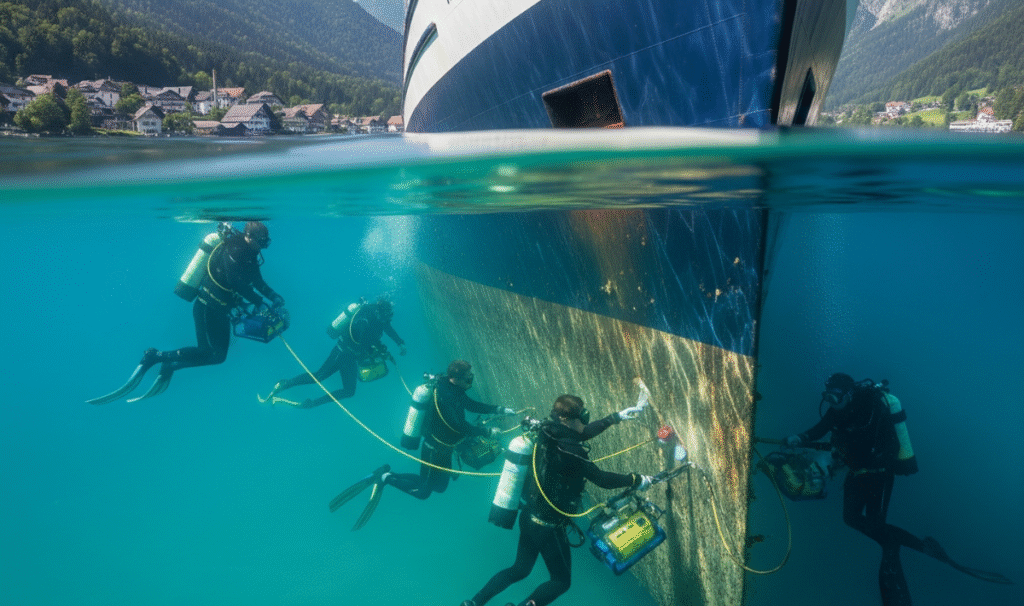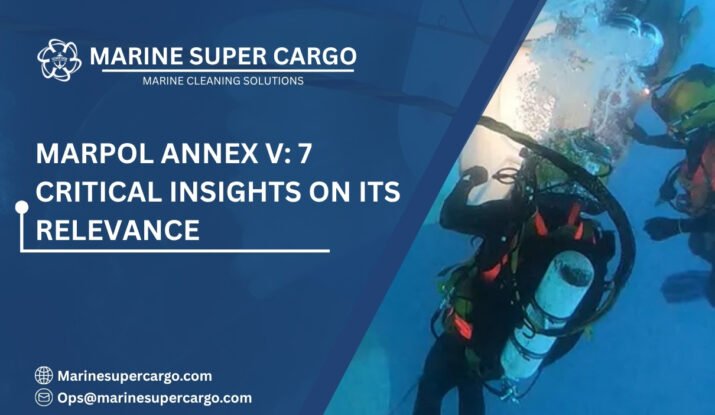When it comes to global shipping, efficiency isn’t only about moving goods faster—it’s about doing it responsibly. Every ship sailing the oceans is part of a tightly regulated system designed to protect marine life. One of the most important frameworks here is MARPOL, and specifically, the relevance of MARPOL Annex V in the context of hull cleaning has become a crucial talking point.
Think about it this way: a ship’s hull is its skin. Over time, barnacles, algae, and biofilms stick to that skin, weighing it down just like a marathon runner carrying mud on their shoes. Hull cleaning clears that drag, but in the process, waste materials—sludge, organisms, and coatings—may release pollutants into the surrounding waters. This is where MARPOL Annex V steps in, setting strict rules about how hull cleaning waste is managed and disposed of at sea.
In this in-depth article, we will explain MARPOL Annex V’s relevance to hull cleaning, why ship owners cannot afford to overlook it, and how compliance not only saves the environment but bolsters operational efficiency and cost-effectiveness.
Understanding MARPOL Annex V Relevance
MARPOL (the International Convention for the Prevention of Pollution from Ships, developed by IMO) includes different annexes. Annex V specifically regulates the prevention of pollution by garbage from ships.
Why does this matter for hull cleaning? Because when we remove biofouling, paint scrapings, or slime layers from a ship’s hull, these materials may be classified as “garbage” or waste under Annex V. That automatically makes their discharge at sea strictly controlled—or completely prohibited.
So, MARPOL Annex V relevance here is not abstract. It directly affects how, when, and where hull cleaning takes place. Operators must ensure that what comes off a hull does not simply end up polluting marine environments.
#BAESystems has announced plans to launch the first fully autonomous submarine called Herne.
— MarineInsight (@MarineInsight) September 11, 2025
Read the news here 👉https://t.co/HtTXQstJpg#Submarine #Autonomous #News #UK #Maritime #MarineInsight #Merchantnavy #Merchantmarine #MerchantnavyShipshttps://t.co/HtTXQstJpg
The Correlation Between Hull Cleaning and Waste
Let’s picture the process:
- A fouled hull has organisms like barnacles, mussels, seaweed, and microscopic biofilms.
- Hull cleaning dislodges them into the surrounding waters.
- Along with living organisms, fragments of protective coatings and antifouling paints may also flake off.
- Many of these substances are hazardous, containing copper, zinc, or biocides.
This is exactly why MARPOL Annex V relevance is rising. Authorities now view uncontrolled hull cleaning as a waste-discharge activity, not just maintenance. If unmanaged, it can:
- Release harmful chemicals.
- Spread invasive marine species to foreign waters.
- Breach international compliance laws.
The result? Fines, penalties, and reputational loss for shipping companies.

Key Reasons MARPOL Annex V Relevance Matters
When it comes to hull cleaning, ignoring compliance could carry severe consequences. Some of the main reasons ship owners must understand MARPOL Annex V relevance include:
- Legal Compliance: Non-compliance risks fines or detentions during port state inspections.
- Environmental Protection: Preventing invasive species spread and toxic waste discharges protects fragile ecosystems.
- Financial Efficiency: Avoiding penalties saves costs, while clean hulls enhance fuel efficiency.
- Corporate Reputation: Sustainability practices improve a ship operator’s global standing with clients and regulators.
In short, if hull cleaning is the act, Annex V is the rulebook guiding how you can do it safely.
How MARPOL Annex V Links to Fuel Efficiency
You might be asking: What does waste regulation have to do with operational economics? Interestingly, the relevance reaches into fuel bills, too.
- Fouled hulls increase drag and force ships to burn more fuel.
- Regular hull cleaning saves between 10% and 40% in fuel costs, depending on fouling levels.
- But to legally perform that cleaning, and to dispose of fouled organisms correctly, compliance under Annex V must be observed.
Thus, MARPOL Annex V relevance connects the dots: hull cleaning improves fuel efficiency, but only compliant cleaning ensures those savings don’t come at environmental or regulatory expense.
Compliance Risks in Hull Cleaning
Failing to recognize waste from hull cleaning as regulated garbage can trigger non-compliance. Ship owners face three main risks:
- Illegal Discharge: Scraped-off fouling or paint fragments released into open waters.
- Unrecorded Waste: Failing to log hull cleaning wastes in the Garbage Record Book, as MARPOL Annex V requires.
- Invasive Species Spread: Ignoring IAPH and IMO guidelines linked with Annex V.
This makes MARPOL Annex V relevance not only a regulatory requirement but also a central piece of responsible fleet management.
Best Practices for Compliant Hull Cleaning
So how do ship managers implement safe, compliant cleaning while optimizing efficiency? A few best practices include:
- Use Port-Approved Waste Collection Systems
Waste should be captured during hull cleaning rather than discharged directly into surrounding waters. - Apply Advanced Coatings
Antifouling coatings can reduce fouling buildup, minimizing the frequency of waste-heavy cleaning. - Document Waste Management
Accurate record-keeping in the Garbage Record Book is essential. - Plan Cleaning Around Regulations
Operators should always check MARPOL, IMO, and national guidelines before scheduling in-water cleaning.
Following these practices satisfies both compliance authorities and cost-efficiency goals. Learn more
MARPOL Annex V Relevance and Invasive Species
One of the most urgent threats tied to hull cleaning is the transfer of invasive marine species. When living organisms are dislodged into foreign ecosystems, they may outcompete native species, causing ecological and economic damage.
IMO guidelines, supported by the International Association of Ports and Harbors (IAPH), emphasize MARPOL Annex V relevance in this area. Only by controlling waste discharges during hull cleaning can shipping reduce this global risk.
Environmental and Economic Impact
By managing hull cleaning under MARPOL Annex V rules, we gain a double win:
- Safeguard Marine Biodiversity: Prevent toxic chemicals and invasive species from destroying coastal systems.
- Maintain Profitability: Clean hulls increase fuel efficiency, reduce emissions, and keep operators compliant, avoiding costly detentions.
This dual outcome amplifies the importance of MARPOL Annex V relevance to fleet managers.

Future Trends: Smarter, Cleaner Hull Care
Hull cleaning—and how it’s regulated—will continue to evolve:
- Robotic Hull Cleaners: Capture waste directly, preventing discharge violations.
- Real-Time Fouling Monitors: Sensors detect fouling levels and signal when cleaning becomes urgent.
- Non-Toxic Coatings: Next-gen biomimetic and nano-coatings prevent adhesion of marine organisms with minimal environmental footprint.
- AI-Driven Scheduling: Software integrates conditions, fouling growth rates, and compliance windows for optimized cleaning.
In the future, MARPOL Annex V relevance will guide not just compliance but also technological adoption.
Conclusion
MARPOL Annex V is not just “one more regulation.” It is central to how responsible operators address hull cleaning today. To recap:
- MARPOL Annex V relevance directly affects how cleaning waste is collected, recorded, and disposed of.
- Ignoring compliance risks, fines, invasive species spread, and reputational damage.
- Proactive compliance turns an environmental duty into financial savings via better efficiency.
For ship operators serious about efficiency and compliance, working with trusted solutions like CleanShip.co ensures hull cleaning practices that protect both profits and the planet.
FAQs
Q1. What is the MARPOL Annex V relevance to hull cleaning?
It determines how waste from hull cleaning—biofouling, paint particles, scrapings—must be managed. Discharge is restricted, making proper collection essential.
Q2. Can hull cleaning waste simply be discharged at sea?
No. Under Annex V, such materials are regulated as garbage, and uncontrolled discharge can cause invasive species transfer and heavy fines.
Q3. How does compliance support fuel savings?
Regular cleaning boosts efficiency, reducing drag and cutting fuel costs, but MARPOL Annex V relevance ensures you achieve savings legally.
Q4. Are there approved eco-friendly hull cleaning methods?
Yes. Technologies like robotic cleaning with waste-capture systems align with IAPH and IMO guidance while adhering to MARPOL Annex V compliance.
Q5. What’s the future of MARPOL Annex V enforcement?
Expect stricter oversight, harmonized port rules, and advanced technologies ensuring hull cleaning is not only efficient but fully compliant.


